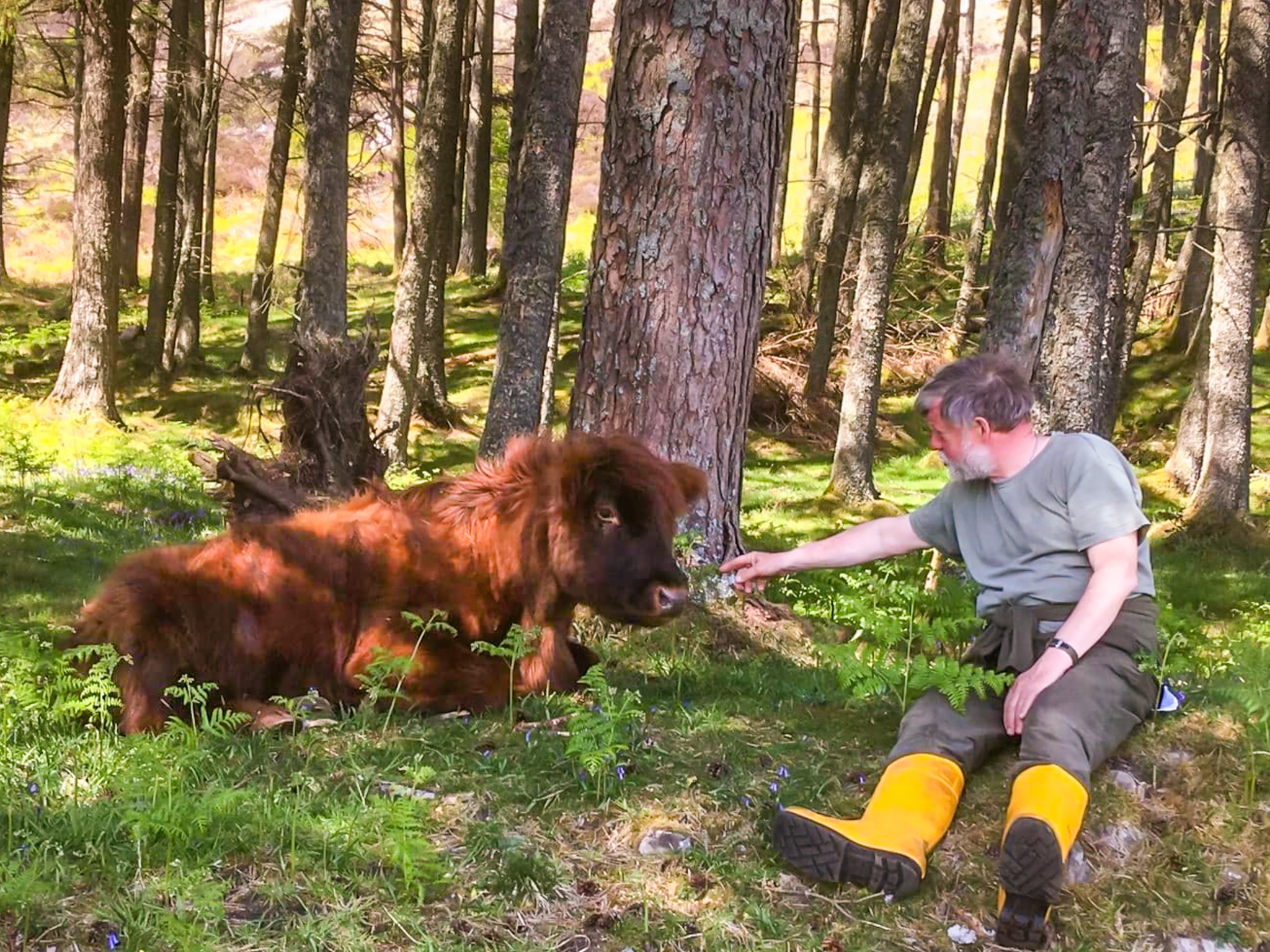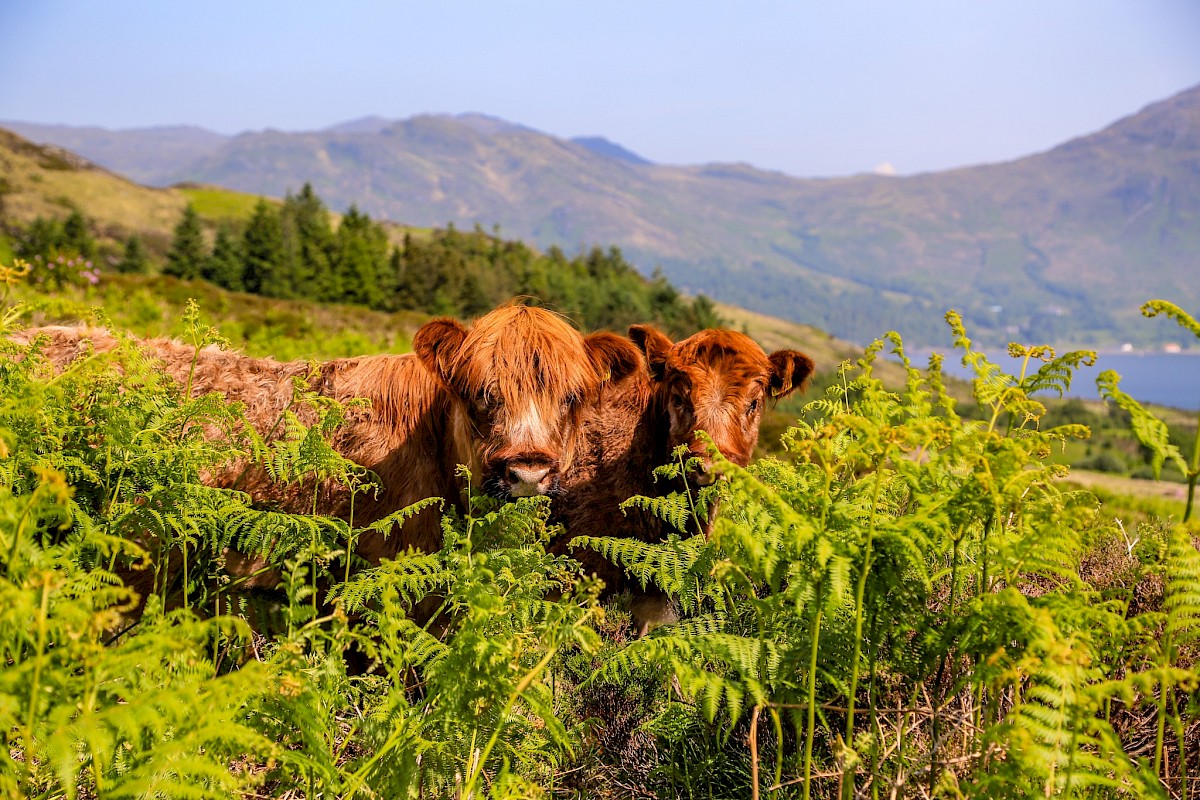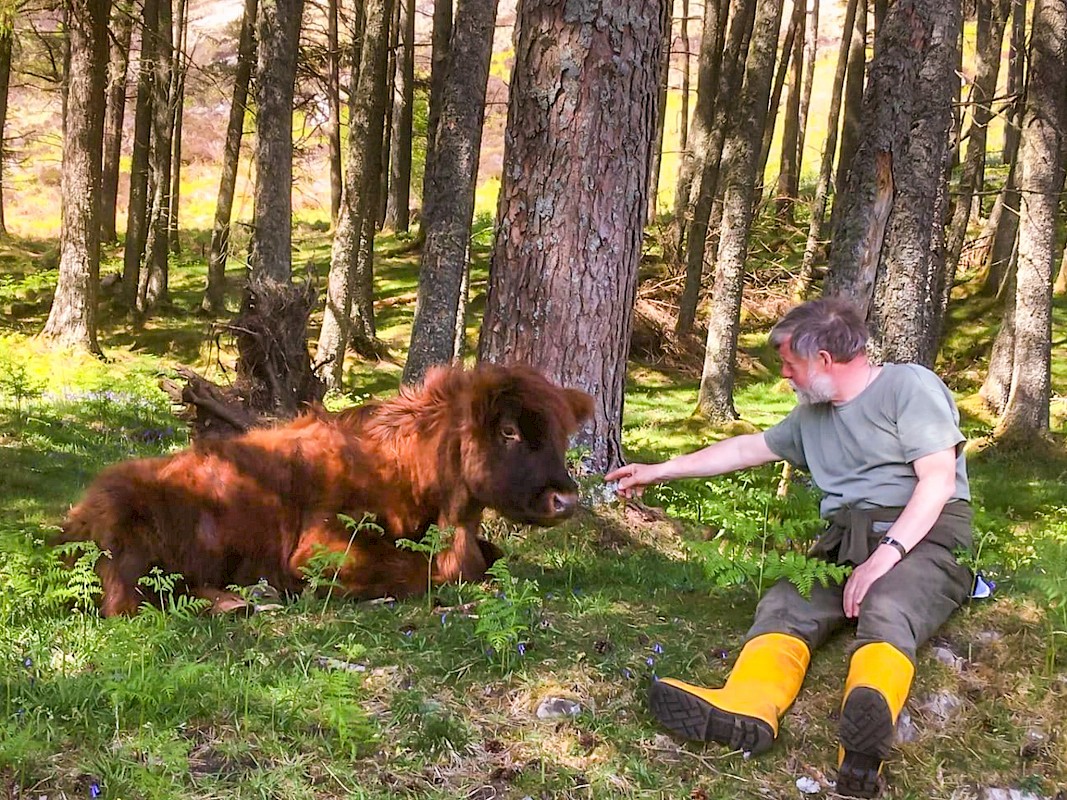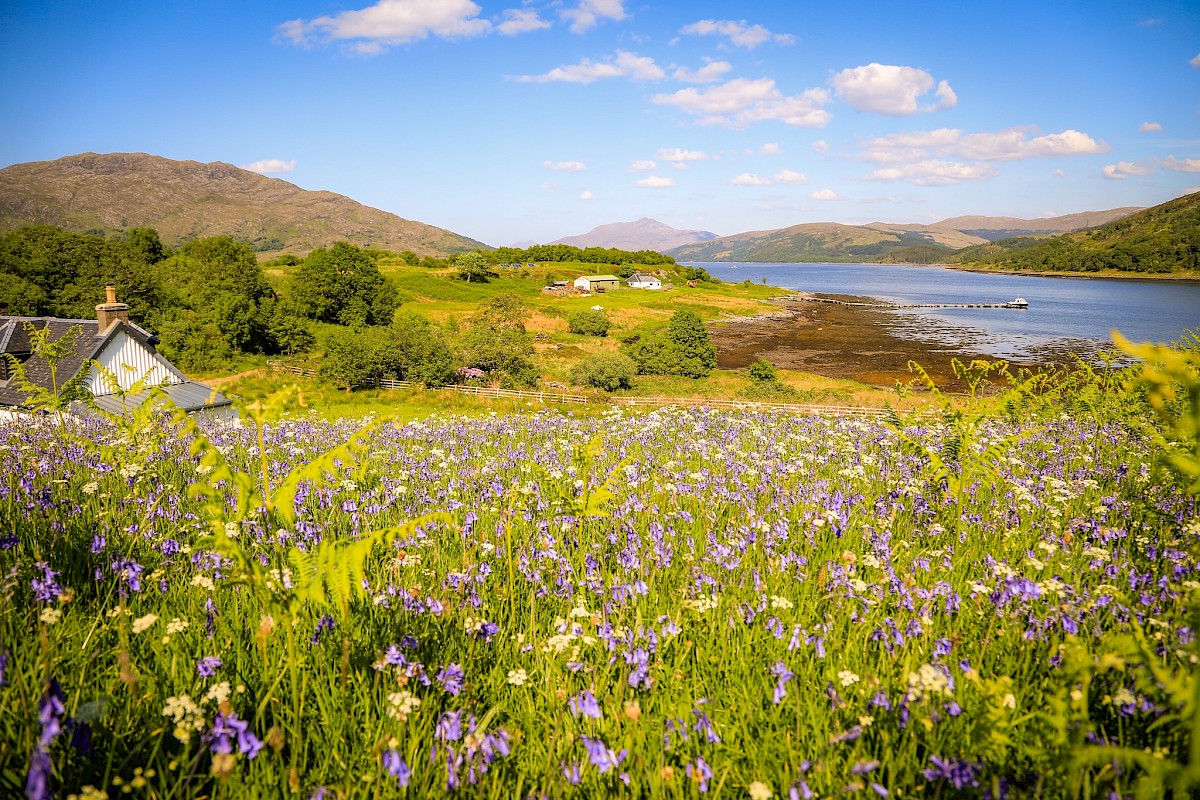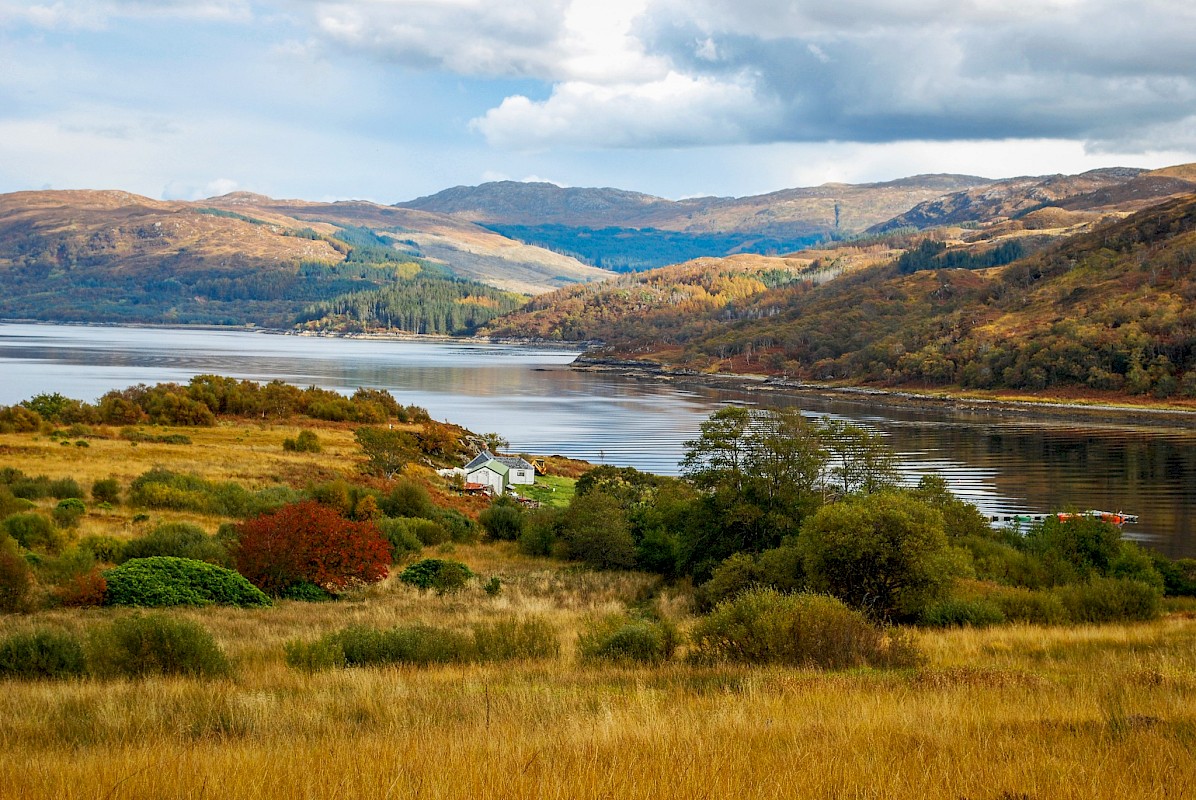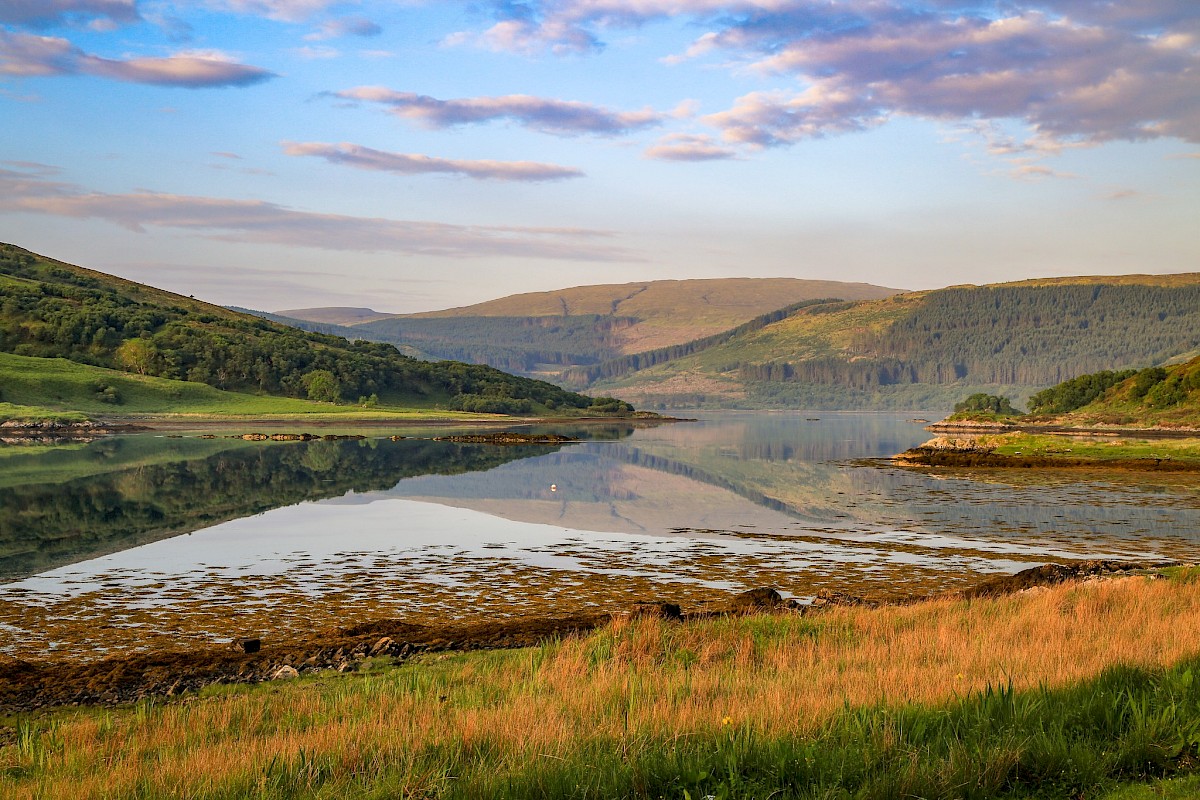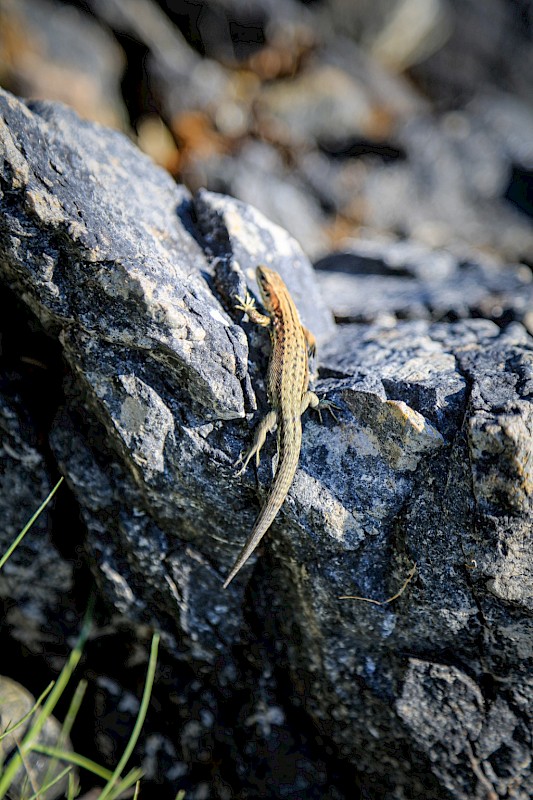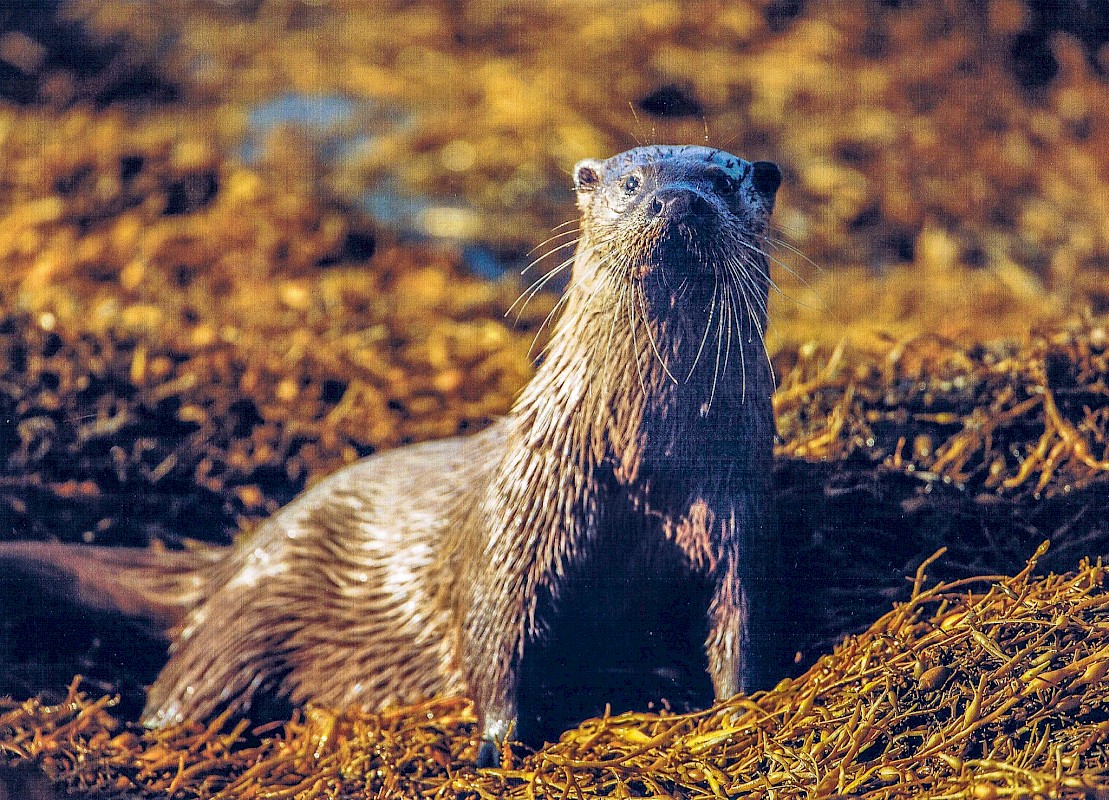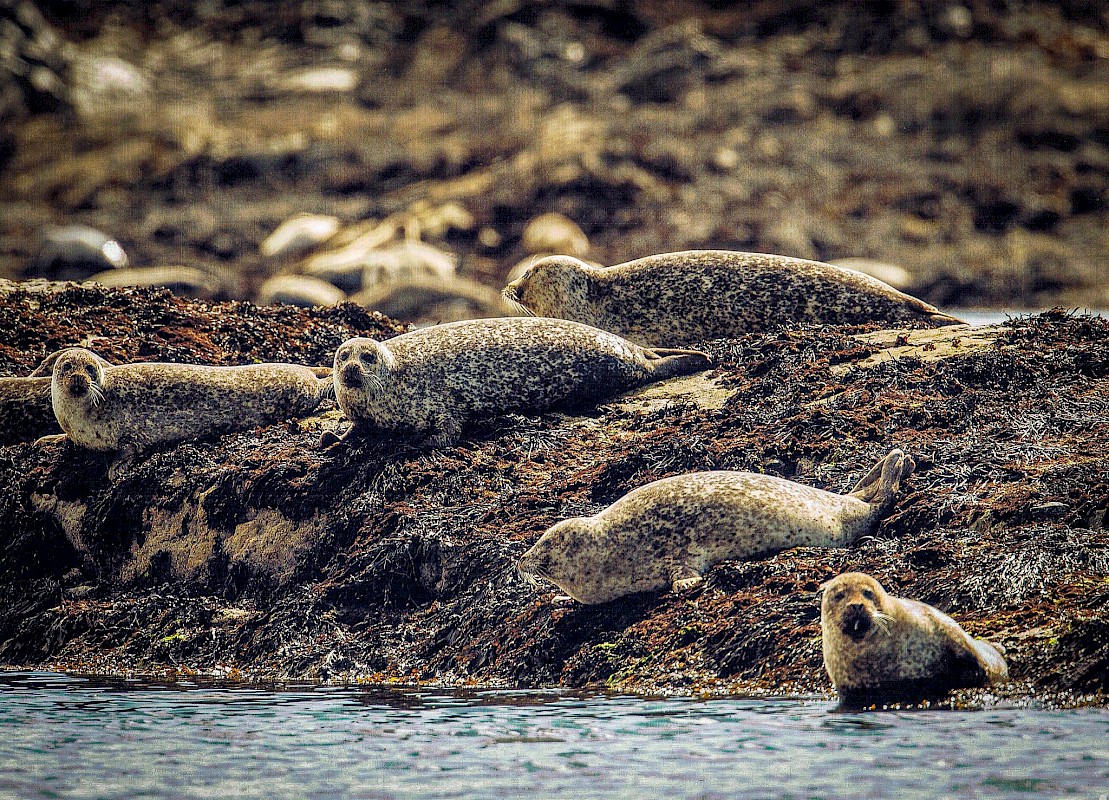Allison Jackson who, with her husband Andy, manages the Isle of Carna on behalf of the Milward-Towers family describes some the vital work that the Carna Conservation Initiative is doing to regenerate this jewel of an island so that it can continue to be enjoyed by generations to come.
Carna is a jewel of an island that lies at the western end of Loch Sunart and at the mouth of Loch Teacuis, between the West Highland Peninsulas of Ardnamurchan and Morvern. It is a 600-acre uninhabited mosaic of wildlife rich habitats including traditional wildflower meadows, Birchwood, Pinewood and internationally important Atlantic Oakwoods, heather moorland, peatland, hill grazing, many burns and some bogs.
However, this was not always the case because, like most of the Scottish Highlands, generations of overgrazing by sheep and deer left the Island stripped bare and eroding. It became unable to support wildlife or farm animals and there was a huge loss of biodiversity across the whole spectrum, from deep in the soil structure right up to the to the treetops.
The island then went through a period of rest from grazing when farming on it became less and less viable, eventually leading to it becoming permanently uninhabited in 2003. The turning point for its regeneration came in 2014, when the Carna Conservation Community Initiative Company was formed to enhance and protect the Island’s wildlife and habitats, improve the islands economic and environmental sustainability and provide benefit to the local community and economy.
A key part of the project is to change the way that land on the island is managed by adopting selective, regenerative and managed grazing of grassland, meadows and woodland. These land types play a vital role in supporting biodiversity ranging from soil micro-organisms, amphibians, insects (including pollinators), bird life and mammals. However, when they are overgrazed, undergrazed or abandoned, they become less and less productive because soil and nutrients are depleted. On the other hand, with managed grazing, the soil structure, nutrient content and biodiversity all improve, and this results in land with a healthier environment, that locks in carbon and supports a much richer variety of flora and fauna. The tiniest insects, the eagles soaring overhead, the majestic red deer on the hills, the otters living along the shoreline and the seals and porpoises in our lochs all benefit as a result.
The change in the way Carna was grazed and its land was managed came in February 2018 when Carna Conservation Initiative and its partners Wilderculture introduced native, rare breed cattle to the Island. Since then, a small herd of Whitebred Shorthorn-Highland cross heifers have been performing a vital munching and trampling role to help open up the grass and woodland to more light, add nutrients to the soil and provide a serious boost for biodiversity on the island.
Getting the cattle to the island with the limited resources available was a challenge. At our Laga Bay base, we built an enclosed open topped raft that could be towed slowly across Loch Sunart to Carna with the young cattle on it. It was early February and unfortunately, a spell of clear weather broke to a wet and stormy day, but we made the choice was made to go ahead with the transfer anyway. Our team was made up of Alex the vet, who travelled on the raft with the cattle, Caroline and Steve from Wilderculture, Andy and Allison (myself) from Ardnamurchan Charters/Carna Conservation Initiative. The cattle were calm throughout the transfer and took the whole process amazingly well. As soon as they landed on Carna their heads were down munching the new grass. Meanwhile we were soaking wet, exhausted and hungry!
As a visitor to Carna, you can see the “girls” in action as you explore this uninhabited island and reconnect with yourself, others and its abundant native wildlife. You also contribute to the funding that allows the Carna Conservation Initiative to continue the regeneration of this jewel of an island and ensure that it can be enjoyed by generations to come. So, if you want to experience the conservation work up close, there is an opportunity to do so during a 3-night residential conservation course taking place in September 2020. Please get in touch if you do.
Allison Jackson along with her husband Andy, manages the Isle of Carna on behalf of the Milward-Towers family as well as running Laga Lodge self-catering accommodation and Ardnamurchan Charters at Laga Bay on Loch Sunart. They also run conservation and art courses on the Island of Carna itself.
If you’d like to share what you love about the area on our website, please feel free to get in touch by email at web@westhighlandpeninsulas.com.
